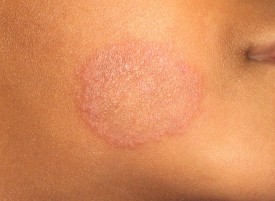Fungus of the Skin or Nails

Fungus can infect the skin as well as the fingernails and toenails. Fungal infections can be caused by yeast or by dermatophytes (types of fungi). Fungal infection of the nails, called onychomycosis, may be caused by yeast or dermatophytes. Common skin fungus conditions caused by dermatophytes are known as athlete's foot, jock itch, and ringworm.
Skin Fungus: Yeast is present on everyone's skin in small amounts and is more likely to grow in warm, moist conditions, such as during the high temperatures and high humidity in summer months or in sunny tropical areas. People with oily skin may develop an overgrowth of yeast more often than those with drier skin. The fungal skin infections caused by dermatophytes also tend to arise in moist skin areas, such as the foot or the groin.
Nail Fungus: Fungal nail infections are rare in children and tend to occur more frequently in older adults. These infections are caused most commonly by dermatophytes, but can be caused by molds or yeasts. Nail fungus is more common on the toenails because of being confined in shoes, a dark, moist, warm environment. Also, toes have decreased blood circulation as compared to fingers, which makes detecting and clearing a toenail fungus infection more difficult.
Physical exam
Excess yeast on the skin produces small, pink or tan, scaly spots on light-colored skin and lighter or white spots on darker-colored skin. The spots may be scattered over the arms, chest, and back. Fungal skin infections caused by yeasts or dermatophytes can cause itching. Fungal infections of the nails cause discolored, thick, brittle, crumbly and distorted nails that can become difficult to cut. The infected nails may also separate from the nail bed and cause pain or a foul odor.
Treatment
- Skin and Scalp: antifungal cleansers, shampoos, creams or lotions, and/or oral medications
- Nails: Antifungal creams, lotions, or gels, and oral medications
.svg?iar=0&hash=F6049510E33E4E6D8196C26CCC0A64A4)

/hfh-logo-main--white.svg?iar=0&hash=ED491CBFADFB7670FAE94559C98D7798)